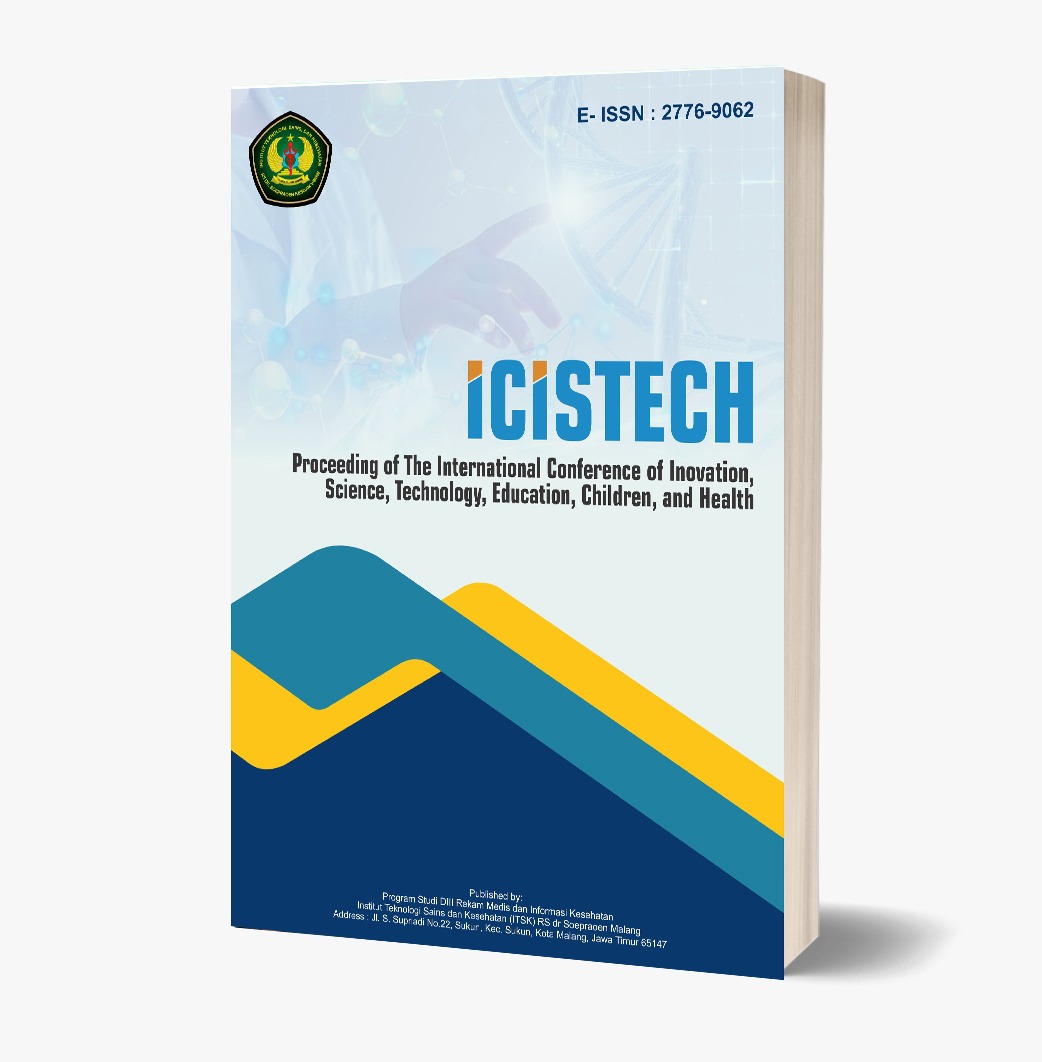VALIDATION OF PARENTAL COMMUNICATION TYPE SCALE FOR ABUSIVE PARENT
DOI:
https://doi.org/10.62951/icistech.v1i1.36Keywords:
Validation, Parental communication type scale, Abusive parentAbstract
Effective communication becomes an important part in developing a child’s character and to prevent the violence of parents towards children. This research aims to develop a communication instrument of parents towards children. There are two communication aspects, which are the opened communication aspect and the closed communication aspect. There are two stages in developing this instrument: first, an introductory study stage to determine the prototype instrument and the second, expert validation examination stage and field examination. Based on the expert analysis results, the instrument has passed the construct validity and it is declared as fit for use. The results of the field examination show that from 34 items, 24 are declared as valid, with the validity value of ≥0.3 and they are reliable as the r value= 0.84≥0.7. From the expert analysis and the field examination, it is concluded that the instrument is fit for research use.
References
Azwar, S. (2011). Penyusunan skala psikologi [The formulation of a psychological scale]. Yogyakarta: Pustaka Pelajar.
Berlianti, D., & others. (2016). Ada apa dengan komunikasi orangtua-remaja?: Pengaruhnya terhadap agresivitas remaja pada sesama [What is up with the parent-teenager communication?: Its influences towards the teenagers’ aggressivity to peers]. Jurnal Ilmu Keluarga dan Konseling, 9(3), 183-194.
Clark, R. D., & Shields, G. (1997). Family communication and delinquency. Adolescence, 32(125), 81-92.
Davies, P. T., Martin, M. J., & Cicchetti, D. (2012). Delineating the sequelae of destructive and constructive interparental conflict for children within an evolutionary framework. Developmental Psychology, 48(4), 939-955. https://doi.org/10.1037/a0025899
Gerungan, W. A. (2009). Psikologi sosial [Social psychology] (3rd ed.). Bandung: PT Refika Aditama.
Gottman, J., Katz, L. F., & Hooven, C. (2013). Meta emotion: How families communicate emotionally. Retrieved from www.googlebooks.com
Hill, R. B. (1998). Understanding Black family functioning: A holistic perspective. Journal of Comparative Family Studies, 29(1), 15-25.
Kementerian Sosial Republik Indonesia. (2020). Data perlindungan anak di era pandemi COVID-19 [Data of child protection during the pandemic of COVID-19]. Retrieved December 12, 2020, from https://republika.co.id/berita/qi6npr330/kemensos-kasus-kekerasan-anak-melonjaksaat-pandemi
Muarifah, A., & Wati, D. E. (2018). Identifikasi kekerasan terhadap anak usia dini di Yogyakarta [Identification of violence towards young children in Yogyakarta]. Yogyakarta: LPPM UAD. https://ahlimediapress.com/prosiding/index.php/icistech/
Naz, F., Batool, I., & Mushtaq, M. (2016). Parents-child communication conflicts: Predictors of socio-emotional disabilities and interactive problems in children. Pakistan Journal of Social Sciences (PJSS), 36(2), 895-906.
Oktavera, A., & others. (2017). Hubungan antara persepsi terhadap komunikasi interpersonal orangtua-remaja dengan penyesuaian diri remaja [The relations between perception towards interpersonal communication of parents-teenagers with the teenagers’ adaptation]. Jurnal Empati, 6(4), 433-438.
Rakhmat, J. (2004). Psikologi komunikasi [Psychology of communication]. Bandung: PT Remaja Rosdakarya.
Wati, D. E. (2020). Membangun adab anak melalui komunikasi efektif dalam keluarga [Developing the children’s manners through effective communication in the family]. Jawa Barat: Edu Publisher.
Downloads
Published
How to Cite
Issue
Section
License
Copyright (c) 2024 Proceeding of The International Conference of Inovation, Science, Technology, Education, Children, and Health

This work is licensed under a Creative Commons Attribution-ShareAlike 4.0 International License.













